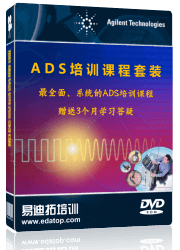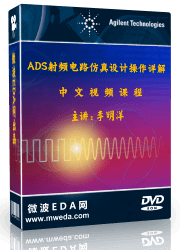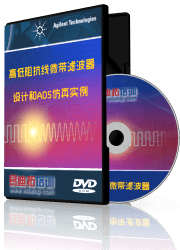- 易迪拓培训,专注于微波、射频、天线设计工程师的培养
Can we edit dataset Values of dB in ADS2011
Can we edit dB values of data values in ADS2011 and can we convert edited dB values into Magnitude and Phase values using ADS2011.
I have shown below data windows of dB values of S11, S21, S12, and S22, I need to edit these values dB and then convert it into Magnitude and phase values using ADS2011. How to get edit values in ADS2011, can you guide me.
See https://www.edaboard.com/thread344343.html
Why not let ADS do the task for you. Instead of displaying dB(S(2,1)) etc in the table if you displayed just S(2,1) then that column would display the s-parameter data in magnitude/angle format automatically. If you want to see the data in separate columns then edit the trace expressions to be either mag(S(2,1)) or phase(S(2,1)) etc and the data will be displayed in that format with no other calculations required.
I tried, now I am getting.
But my question is, can we edit dB values to our own values. For example, S21 in dB for 400 MHz 20.263 is generated automatically, when we simulate it. But I want change this S21 in dB for 400 MHz to some other our own value 18.134 dB and can we generate the equivalent Magnitude and Angle for our own Value 18.134 dB of S21 in dB. Is it possible to change S21 in dB, S12 in dB, S11 in dB, S22 in dB to our own values and generate equivalent Magnitude and Phase Values.
Is this above mentioned option possible in ADS2011, can you guide me, how to change our own dB values and generate Magnitude and Phase values rather automatically generated dB values to Magnitude and Phase values.
Yes, it is possible.
Export data as Touchstone, CITI or MDIF format.
Then edit text data. And reload modified data.
http://edadocs.software.keysight.com...avingaDataFile
Or simply do following in the Data Display Window.
S_new = S
freq_index= find_index(freq, 400MHz)
S_new(1,1)[freq_index] = polar(10**(new_mag11_dB/20), new_phase11_deg)
S_new(1,2)[freq_index] = polar(10**(new_mag12_dB/20), new_phase12_deg)
S_new(2,1)[freq_index] = polar(10**(new_mag21_dB/20), new_phase21_deg)
S_new(2,2)[freq_index] = polar(10**(new_mag22_dB/20), new_phase22_deg)
Simply, choose Mag/Angle option as trace option.
S is complex value matrix.
Since you apply dB() fuction for S, you can not display phase information.
List mag(s(*,*)) and phase(S(*,*))
http://edadocs.software.keysight.com...ads2009/Traces
How I have to do in the above said and Where I have to write and How I have to excute it. I am totally confused it.
http://www.designers-guide.org/Forum...66403928/18#18
http://www.designers-guide.org/Forum...1279385505/3#3
Gentlemen, this is great. My amplifier simulated with ADS now has 90dB gain and +80dBm output power at 5V supply voltage.
申明:网友回复良莠不齐,仅供参考。如需专业帮助,请学习易迪拓培训专家讲授的ADS视频培训课程。
上一篇:Simulate a receiver with ADS before to realize a prototype
下一篇:Having troubles properly simulating a rectifier in ADS
ADS中文视频培训教程 | More...
 国内最全面、最专业的Agilent ADS培训课程,可以帮助您从零开始,全面系统学习ADS设计应用【More..】
国内最全面、最专业的Agilent ADS培训课程,可以帮助您从零开始,全面系统学习ADS设计应用【More..】
- Agilent ADS教学培训课程套装
- 两周学会ADS2011、ADS2013视频教程
- ADS2012、ADS2013射频电路设计详解
- ADS高低阻抗线微带滤波器设计培训教程
- ADS混频器仿真分析实例视频培训课程
- ADS Momentum电磁仿真设计视频课程
- ADS射频电路与通信系统设计高级培训
- ADS Layout和电磁仿真设计培训视频
- ADS Workspace and Simulators Training Course
- ADS Circuit Simulation Training Course
- ADS Layout and EM Simulation Training Course
- Agilent ADS 内部原版培训教材合集









 沪公网安备 31011202014168号
沪公网安备 31011202014168号
 1427313829
1427313829 旺旺在线
旺旺在线 Skype Online
Skype Online 13761612886
13761612886 官方淘宝店
官方淘宝店
